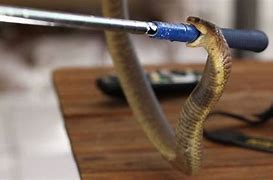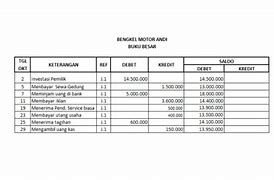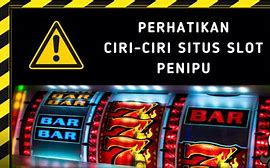
th-century restoration
Following the building's conversion into a mosque in 1453, many of its mosaics were covered with plaster, due to Islam's ban on representational imagery. This process was not completed at once, and reports exist from the 17th century in which travellers note that they could still see Christian images in the former church. In 1847–1849, the building was restored by two Swiss-Italian Fossati brothers, Gaspare and Giuseppe, and Sultan Abdulmejid I allowed them to also document any mosaics they might discover during this process, which were later archived in Swiss libraries.[252][better source needed] This work did not include repairing the mosaics, and after recording the details about an image, the Fossatis painted it over again. The Fossatis restored the mosaics of the two hexapteryga (singular Greek: ἑξαπτέρυγον, pr. hexapterygon, six-winged angel; it is uncertain whether they are seraphim or cherubim) located on the two east pendentives, and covered their faces again before the end of the restoration.[253] The other two mosaics, placed on the west pendentives, are copies in paint created by the Fossatis since they could find no surviving remains of them.[253] As in this case, the architects reproduced in paint damaged decorative mosaic patterns, sometimes redesigning them in the process. The Fossati records are the primary sources about a number of mosaic images now believed to have been completely or partially destroyed in the 1894 Istanbul earthquake. These include a mosaic over a now-unidentified Door of the Poor, a large image of a jewel-encrusted cross, and many images of angels, saints, patriarchs, and church fathers. Most of the missing images were located in the building's two tympana.
One mosaic they documented is Christ Pantocrator in a circle, which would indicate it to be a ceiling mosaic, possibly even of the main dome, which was later covered and painted over with Islamic calligraphy that expounds God as the light of the universe. The Fossatis' drawings of the Hagia Sophia mosaics are today kept in the Archive of the Canton of Ticino.[254]
What is the duration of Hagia?
The duration of the song Hagia is 2:46 minutes.
The duration of the song Hagia is 2:46 minutes.
History of Hagia Sophia
Hagia Sophia is a work that was constructed three times in the same location. Today’s Hagia Sophia is known as the “Third Hagia Sophia”. The first construction of Hagia Sophia started during the reign of Constantine I, who accepted Christianity as the official religion of the Roman Empire. This building, which was constructed as a basilica with a wooden roof on the first of the seven hills of Istanbul and was called "The Great Church" at the time, was opened during the reign of Constantine II in 360. There is no remnant from this structure, which was largely devastated as a result of a fire that broke out in the revolt that started in 404.
The second Hagia Sophia was built by Emperor Theodosius II on the first one and opened to worship in 415. This building, which was also constructed as a basilica and with a wooden roof, was devastated by the rebels in the Nika Revolt against Emperor Justinian in 532.
Just after the riots, Emperor Justinian decided to build a larger and more glorious Hagia Sophia than the first two. The third Hagia Sophia was built by the Byzantine Emperor Justinian I in 532-537.
Hagia Sophia, which was used as the Imperial Church of Eastern Rome, was frequently devastated due to riots, wars, and natural disasters throughout history. Hagia Sophia experienced one of the biggest destructions during the 4th Crusade in 1204 when the city was invaded. The Crusaders looted Hagia Sophia along with the whole city. During the Latin occupation that lasted from 1204 to 1261 in Istanbul, Hagia Sophia was converted into a cathedral attached to the Roman Catholic Church.
Repairs were made to try and preserve the Hagia Sophia, which was seriously damaged after the Eastern Roman administration was re-established in Istanbul. However, the repairs were insufficient and in 1346 the eastern archivolt of the Hagia Sophia and a part of the dome collapsed.
In fact, Hagia Sophia experienced the darkest period of its history from the Latin invasion to the conquest of Istanbul. Hagia Sophia, which was destroyed twice and built for the third time, ruined by wars and revolts for centuries, and the parts of which collapsed due to neglect and architectural errors, remained under the permanent threat of collapse until the conquest of Istanbul by Fatih Sultan Mehmed Khan. In addition, the sociological and symbolic meaning of the temple was greatly damaged due to the schism between the Catholic and Orthodox churches.
The Ottomans took great care of the Hagia Sophia Mosque, which they acknowledged and appreciated as the symbol of the conquest, maintained and repaired it continuously, and turned the mosque into a much more robust structure starting from the rule of Fatih Sultan Mehmed Khan. In particular, the additions and arrangements made by Sinan the Architect to Hagia Sophia played a major role in the survival of this heritage of humanity.
Thus, it is stated in the historical records that Fatih Sultan Mehmed Khan, who went to Hagia Sophia right after the conquest, was saddened by the status of the mosque and recited the following verses:
“Perdedâri mîkoned ber kasr-i Kayser ankebut Bûm novbet mîzened der tarem-i Efrâsiyâb”
(“A spider spins its web in the palace of the Kaiser, An owl hoots in the towers of Afrasiab")
Fatih Sultan Mehmed Khan, who endowed the Hagia Sophia Mosque as his own charity and secured the maintenance-repair costs by providing the income from several properties, started the educational activities by building a madrasah adjacent to the mosque. The first minaret of Hagia Sophia was built of wood during the rule of Fatih Sultan Mehmed Khan. This minaret, which existed for many years, was removed during the major repair in 1574. The second minaret of the Hagia Sophia Mosque was built of bricks during the rule of Sultan Bayezid II.
One of the Ottoman sultans who showed the greatest interest in Hagia Sophia was Sultan Selim II. After the building showed signs of fatigue, Selim II Khan appointed Sinan the Architect for the maintenance and repair of Hagia Sophia. The Hagia Sophia, whose domes and walls collapsed many times during the Eastern Roman period, never collapsed again after the renovations of Sinan the Architect despite many great earthquakes in Istanbul. The tradition of building tombs for the sultans in the graveyard of Hagia Sophia Complex started with the first tomb built by Sinan the Architect for Sultan Selim II.
From the time of Fatih Sultan Mehmet Khan, every sultan strived to beautify the Hagia Sophia even more, and the Hagia Sophia was transformed into an entire complex with structures such as mihrab, minbar, rostrum, minarets, sultan's office, shadirvans (fountain providing water for ritual ablutions), madrasah, library, and soup kitchen. In addition, great importance was attached to the interior decorations of the Hagia Sophia Mosque during the Ottoman period. Hagia Sophia was adorned with the most elegant examples of Turkish arts such as calligraphy and tile art and the temple gained new aesthetic values. Thus, Hagia Sophia was not only converted into a mosque but also this common heritage of humanity was preserved and improved.
Hagia Sophia, which was converted into a mosque with the conquest and served as a mosque for 481 years, was closed off to the public after the restoration works started in the 1930s. Then it was turned into a museum with a Cabinet Decree dated November 24, 1934. The Council of State reversed the Cabinet Decree in question on July 10, 2020. The Hagia Sophia Mosque was reopened to worship with the Presidential Decree No. 2729 signed by President Recep Tayyip Erdoğan and promulgated immediately after.
As the Cabinet Decree dated 24/11/1934 and numbered 2/1589 on the conversion of the Hagia Sophia Mosque in Fatih District of Istanbul Province into a museum was annulled by the Decision of the Tenth Chamber of the Council of State dated 2/7/2020 and numbered E:2016/16015, K:2020/2595, it was decided that the administration of the Hagia Sophia Mosque was transferred to the Presidency of Religious Affairs in accordance with Article 35 of the Law on the Establishment and Duties of the Presidency of Religious Affairs No. 633 dated 22/6/1965.
Recep Tayyip ERDOĞAN | PRESIDENT
Hagia Sofia (bahasa Yunani: Ἁγία Σοφία [aˈʝia soˈfia]; bahasa Turki: Ayasofya; bahasa Latin: Sancta Sapientia; "Kebijaksanaan Suci") adalah sebuah tempat ibadah di Istanbul, Republik Turki. Dari masa pembangunannya pada tahun 537 M sampai 1453 M, bangunan ini merupakan Katedral Ortodoks dan tempat kedudukan Patriark Ekumenis Konstantinopel,[1] kecuali pada tahun 1204 sampai 1261, ketika tempat ini diubah oleh Pasukan Salib Keempat menjadi Katedral Katolik Roma di bawah kekuasaan Kekaisaran Latin Konstantinopel. Bangunan ini menjadi masjid mulai 29 Mei 1453 sampai 1931 pada masa kekuasaan Kesultanan Utsmaniyah. Kemudian bangunan ini disekulerkan dan dibuka sebagai museum pada 1 Februari 1935 oleh Republik Turki.[2] Kemudian menjadi masjid kembali pada Jumat, 10 Juli 2020 setelah pengadilan Turki memutuskan bahwa konversi Hagia Sofia pada tahun 1934 menjadi museum adalah ilegal. Keputusan ini membuka jalan untuk kembali mengubah monumen tersebut menjadi masjid.[3] Terkenal akan kubah besarnya, Hagia Sofia dipandang sebagai lambang arsitektur Bizantium[4] dan dikatakan "telah mengubah sejarah arsitektur."[5] Bangunan ini tetap menjadi katedral terbesar di dunia selama hampir seribu tahun sampai Katedral Sevilla selesai dibangun pada tahun 1520.
Bangunan yang sekarang ini awalnya dibangun sebagai sebuah gereja antara tahun 532-537 atas perintah Kaisar Romawi Timur Yustinianus I dan merupakan Gereja Kebijaksanaan Suci ketiga yang dibangun di tanah yang sama, dua bangunan sebelumnya telah hancur karena kerusuhan. Bangunan ini didesain oleh ahli ukur Yunani, Isidoros dari Miletos dan Anthemios dari Tralleis.[6]
Gereja ini dipersembahkan kepada Kebijaksanaan Tuhan, sang Logos, pribadi kedua dari Trinitas Suci,[7] pesta peringatannya diadakan setiap 25 Desember untuk memperingati kelahiran dari inkarnasi Logos dalam diri Kristus.[7] Walaupun sesekali disebut sebagai Sancta Sophia (seolah dinamai dari Santa Sofia), sophia sebenarnya pelafalan fonetis Latin dari kata Yunani untuk kebijaksanaan. Nama lengkapnya dalam bahasa Yunani adalah Ναὸς τῆς Ἁγίας τοῦ Θεοῦ Σοφίας, Naos tēs Hagias tou Theou Sophias, "Tempat Peziarahan Kebijaksanaan Suci Tuhan".[8][9]
Pada tahun 1453 M, Konstantinopel ditaklukkan oleh Utsmaniyah di bawah kepemimpinan Sultan Mehmed II, yang kemudian memerintahkan pengubahan gereja utama Kristen Ortodoks menjadi masjid. Dikenal sebagai Ayasofya dalam ejaan Turki, bangunan yang berada dalam keadaan rusak ini memberi kesan kuat pada penguasa Utsmaniyah dan memutuskan untuk mengubahnya menjadi masjid.[10][11] Berbagai lambang Kristen seperti lonceng, gambar, dan mosaik yang menggambarkan Yesus, Maria, orang-orang suci Kristen, dan para malaikat ditutup dengan kain hitam. Berbagai atribut Keislaman seperti mihrab, minbar, dan empat menara, ditambahkan. Hagia Sofia tetap bertahan sebagai masjid sampai tahun 1931 M. Kemudian bangunan ini ditutup bagi umum oleh pemerintah Republik Turki dan dibuka kembali sebagai museum empat tahun setelahnya pada 1935. Pada tahun 2014, Hagia Sofia menjadi museum kedua di Turki yang paling banyak dikunjungi, menarik hampir 3,3 juta wisatawan per tahun.[12] Berdasarkan data yang dikeluarkan oleh Kementerian Kebudayaan dan Pariwisata Turki, Hagia Sofia merupakan tempat di Turki yang paling menarik perhatian wisatawan pada 2015.[13]
Dari pengubahan awal bangunan ini menjadi masjid sampai pembangunan Masjid Sultan Ahmed (juga dikenal dengan Masjid Biru) pada 1616, Hagia Sofia merupakan masjid utama di Istanbul. Arsitektur Bizantium pada Hagia Sofia mengilhami banyak masjid Utsmaniyah, seperti Masjid Biru, Masjid Şehzade (Masjid Pangeran), Masjid Süleymaniye, Masjid Rüstem Pasha, dan Masjid Kılıç Ali Pasha.
Gereja pertama yang dibangun pada tanah tersebut dikenal sebagai Μεγάλη Ἐκκλησία (Megálē Ekklēsíā, "Gereja Agung"), atau dalam bahasa Latin "Magna Ecclesia",[14][15] dikarenakan ukurannya yang sangat besar bila dibandingkan dengan gereja pada saat itu di kota Konstantinopel.[7] Gereja ini diresmikan pada 15 Februari 360 pada masa pemerintahan Kaisar Konstantius II oleh Uskup Arian, Eudoxius dari Antiokia,[16] didirikan di sebelah tempat istana kekaisaran dibangun. Gereja Hagia Eirene (secara harfiah bermakna "Kedamaian Suci") di dekatnya telah diselesaikan terlebih dahulu sebelum Gereja Agung selesai. Kedua gereja ini berperan sebagai gereja utama dari Kekaisaran Romawi Timur.
Menulis pada 440, Sokrates dari Konstantinopel mengklaim bahwa gereja ini dibangun oleh Konstantius II, yang mengerjakannya pada tahun 346.[16] Tradisi yang tidak lebih tua dari abad ke-7 melaporkan bahwa bangunan ini dibangun oleh Konstantinus Agung.[16] Zonaras mendamaikan kedua pendapat tersebut, menulis bahwa Konstantius telah memperbaiki bangunan yang telah dikuduskan oleh Eusebius dari Nikomedia ini, setelah keruntuhannya.[16] Karena Eusebius menjadi uskup Konstantinopel pada 339-341, dan Konstantinus meninggal pada 337, tampaknya mungkin saja bahwa gereja pertama ini didirikan oleh Konstantinus.[16] Bangunan ini dibangun sebagai sebuah basilika bertiang Latin tradisional dengan berbagai galeri dan atap kayu, didahului dengan sebuah atrium. Bangunan ini diklaim sebagai salah satu monumen yang paling menonjol di dunia pada saat itu.
Patriark Konstantinopel Yohanes Krisostomus terlibat perselisihan dengan Permaisuri Aelia Eudoxia, istri dari Kaisar Arcadius, dan diasingkan pada 20 Juni 404. Pada kerusuhan berikutnya, gereja pertama ini sebagian besar terbakar.[16] Tidak ada yang tersisa dari gereja pertama ini sekarang.
Gereja kedua diresmikan pada 10 Oktober 415 atas perintah Kaisar Theodosius II. Basilika ini memiliki atap kayu dan dibangun oleh arsitek bernama Rufinus. Pada masa Kerusuhan Nika, gereja ini terbakar pada 13–14 Januari 532.
Beberapa balok marmer dari gereja kedua ini selamat sampai sekarang, beberapa diantaranya adalah relief yang menggambarkan dua belas domba yang mewakili dua belas rasul. Awalnya bagian dari salah satu pintu depan monumental, balok-balok itu sekarang berada di lubang penggalian yang berdekatan dengan pintu masuk museum setelah penemuan pada tahun 1935 di bawah halaman sisi barat oleh A. M. Schneider. Penggalian berikutnya tidak dilanjutkan karena takut merusak keutuhan bangunan.
Sisa reruntuhan Hagia Sophia kedua
Pada 23 Februari 532, hanya beberapa pekan setelah hancurnya basilika kedua, Kaisar Yustinianus I memerintahkan pembangunan gereja ketiga dengan rancangan yang lebih luas dan megah dari sebelumnya.
Yustinianus memilih ahli fisika, Isidore dari Miletus dan ahli matematika Anthemius dari Tralles sebagai arsitek. Akan tetapi, Anthemius meninggal pada tahun pertama pembangunan. Pembangunan ini dijelaskan dalam Tentang Bangunan-bangunan (Peri ktismatōn, Latin: De aedificiis) dari sejarawan Bizantium bernama Procopius. Tiang-tiang dan marmer lain didatangkan dari segala penjuru kekaisaran, di seluruh Mediterania. Pendapat bahwa tiang-tiang ini merupakan rampasan dari kota-kota seperti Roma dan Efesus dikemukakan belakangan.[17] Meskipun tiang-tiang itu dibuat khusus untuk Hagia Sofia, namun ukurannya tampak bervariasi.[18] Lebih dari sepuluh ribu orang dipekerjakan. Gereja baru ini secara serentak diakui sebagai karya arsitektur besar. Teori-teori Heron dari Aleksandria mungkin telah digunakan untuk mengatasi tantangan-tantangan yang muncul dalam membangun kubah luas yang membutuhkan ruang sedemikian besar.[butuh rujukan] Bersama dengan Patriark Menas, kaisar meresmikan basilika ini pada 27 Desember 537, lima tahun sepuluh bulan setelah pembangunan dimulai.[19][20][21] Sedangkan mosaik yang terdapat di dalam gereja baru selesai pada masa Kaisar Yustinus II yang memerintah pada tahun 565–578 M.
Hagia Sofia menjadi pusat kedudukan Patriark Ortodoks Konstantinopel dan tempat utama berbagai upacara Kekaisaran Romawi Timur, seperti penobatan kaisar. Seperti gereja-gereja lain di seluruh dunia Kristen, basilika ini memiliki tempat perlindungan dari penganiayaan bagi para pelanggar hukum.
Pada 726, Kaisar Leo III mengeluarkan serangkaian keputusan yang melarang masyarakat untuk memberikan penghormatan kepada gambar-gambar, memerintahkan tentara untuk menghancurkan semua ikon, sehingga mengantar pada periode ikonoklasme Bizantium. Pada masa itu, semua gambar dan patung keagamaan disingkirkan dari Hagia Sofia. Setelah gerakan ini dibendung pada masa Maharani Irene yang berkuasa pada tahun 797–802, ikonoklasme kembali merebak pada masa Kaisar Theophilos yang sangat dipengaruhi oleh seni rupa Islam,[22] yang melarang penggambaran makhluk hidup.[23] Theophilos membuat pintu-pintu perunggu bersayap dua, yang memperlihatkan monogramnya, di pintu masuk gereja bagian selatan.
Basilika ini mengalami kerusakan pertama kali dalam kebakaran besar tahun 859, dan kemudian saat gempa bumi pada 8 Januari 869, yang membuat sebagian kubahnya runtuh. Kaisar Basilius I memerintahkan agar gereja ini diperbaiki.
Pada masa pendudukan Konstantinopel pada Perang Salib Keempat, gereja ini dijarah dan dinodai oleh Tentara Salib, sebagaimana dijelaskan oleh sejarawan Bizantium Niketas Choniates. Pada masa pendudukan Latin di Konstantinopel (1204–1261), gereja ini berubah menjadi Katedral Katolik Roma. Baldwin I dimahkotai sebagai kaisar pada 16 Mei 1204 di Hagia Sofia, dengan upacara yang pelaksanaannya menggunakan adat Bizantium. Enrico Dandolo, Doge Republik Venesia yang memimpin pendudukan dan invasi terhadap Konstantinopel oleh Tentara Salib Latin pada 1204, dimakamkan di dalam gereja ini. Makam yang telah terukir namanya, yang menjadi bagian dari dekorasi lantai, diludahi oleh banyak masyarakat Romawi Timur yang merebut kembali Konstantinopel pada tahun 1261 M.[24][butuh sumber yang lebih baik] Akan tetapi, saat restorasi yang dipimpin oleh Fossati bersaudara sepanjang tahun 1847–1849, timbul keraguan terhadap keaslian makam doge tersebut; tampaknya lebih seperti sebuah peringatan simbolis daripada situs pemakaman.
Setelah direbut kembali pada 1261 oleh bangsa Bizantium, gereja ini dalam keadaan bobrok. Pada 1317, Kaisar Andronikus II memerintahkan agar empat penopang (Πυραμὶδας, bahasa Yunani:"Piramídas") baru dibangun di sisi timur dan utara gereja, pembiayaannya menggunakan warisan dari mendiang istrinya, Irene.[25] Kubah gereja mengalami keretakan setelah gempa bumi bulan Oktober 1344, dan beberapa bagian bangunan runtuh pada 19 Mei 1346; alhasil gereja ini ditutup sampai 1354 saat perbaikan dilakukan oleh arsitek-arsiteknya, Astras dan Peralta.
Konstantinopel ditaklukkan oleh Utsmani pada 29 Mei 1453. Banyak catatan yang merekam kejadian itu, walaupun beberapa ditulis sekian lama setelah peristiwa tersebut terjadi dan masing-masing menyatakan sebagai catatan yang mendekati aslinya. Baik Yunani, Italia, Slavia, Turki, dan Rusia, semuanya memiliki versi mereka masing-masing yang mungkin sulit untuk disatukan.[26] Salah satu versi cerita tersebut adalah yang ditulis sejarawan kontemporer Inggris bernama Steven Runciman yang dikenal karena bukunya yang berjudul A History of the Crusades.[27]
Setelah penaklukan, Hagia Sofia, disebut Aya Sofya dalam pelafalan Turki, diubah menjadi masjid kekaisaran. Meskipun demikian, keberadaan Gereja Kristen Ortodoks tetap diakui, sebagaimana dalam sistem millet Utsmani yang memberikan agama non-Islam kewenangan khusus dalam mengatur urusan masing-masing.[28] Gennadius Scholarius lantas ditetapkan sebagai Patriark Konstantinopel pertama pada masa Utsmani, kemudian menetapkan kedudukannya di Gereja Rasul Suci,[29] yang kemudian berpindah ke Gereja Pammakaristos.
Seperti dijelaskan oleh beberapa pengunjung dari Barat (misalnya bangsawan dari Kordoba bernama Pero Tafur[30] dan Cristoforo Buondelmonti dari Firenze),[31] gereja saat itu dalam keadaan bobrok, dengan beberapa pintu telah terlepas dari engselnya. Mehmed II memerintahkan perbaikan dan pengubahannya menjadi masjid. Mehmed menghadiri ibadah Jumat yang pertama kalinya di masjid pada 1 Juni 1453.[32] Hagia Sofia menjadi masjid kekaisaran pertama di Istanbul.[33] Pada wakaf yang bersangkutan dianugerahkan sebagian besar rumah yang saat ini berdiri di kota tersebut dan daerah yang kelak menjadi Istana Topkapı.[25] Sejak tahun 1478, sebanyak 2.360 toko, 1.360 rumah, 4 karavanserai, 30 toko boza, dan 23 toko domba memberikan penghasilan mereka untuk yayasan tersebut.[34] Melalui piagam kekaisaran tahun 1520 (926 H) dan 1547 (954 H), berbagai toko dan bagian dari Grand Bazaar dan pasar-pasar lain, juga ditambahkan ke dalamnya.[25]
Sebelum 1481, sebuah menara kecil telah didirikan di sudut barat daya bangunan di atas menara tangga.[25] Kemudian Sultan Bayezid II (1481–1512), membangun menara lain di sudut timur laut.[25] Salah satu dari menara itu runtuh setelah gempa bumi pada tahun 1509,[25] dan sekitar pertengahan abad keenam belas keduanya diganti dengan dua menara yang dibangun di sudut timur dan barat bangunan.[25]
Pada abad keenam belas, Sultan Suleiman Al Kanuni membawa dua batang lilin kuno dari penaklukannya atas Hungaria dan ditempatkan mengapit mihrab. Pada masa Selim II, dikarenakan mulai menunjukkan tanda-tanda kerapuhan, Aya Sofya diperkuat dengan dukungan struktural untuk bagian luar. Proyek ini dikepalai arsitek Utsmani saat itu, Mimar Sinan, yang juga dikenal sebagai salah satu insinyur gempa pertama di dunia.[35] Untuk memperkuat struktur bersejarah Bizantium ini, Sinan membangun dua menara besar di barat yang awalnya ruang khusus sultan, dan türbe (bangunan untuk makam di Turki) untuk makam Selim II di tenggara bangunan pada 1576-7 M / 984 H.[25] Selain itu, lambang bulan sabit emas dipasang di atas kubah.[25] Kemudian, makam ini juga menjadi makam bagi 43 pangeran Utsmani.[25] Pada 1594 M / 1004 H Mimar (kepala arsitek) Davud Ağa membangun makam Murad III (1574–1595), tempat sultan dan permaisurinya, Safiye Sultan, putra, dan putri mereka dikebumikan.[25] Bangunan makam persegi delapan putra mereka Mehmed III (1595–1603) dibangun arsitek kekaisaran Dalgiç Mehmet Aĝa pada 1608 / 1017 H. Di bangunan ini, dimakamkan pula Handan Sultan, selir Mehmed III yang menjadi ibu suri bagi putra mereka Ahmed I. Dimakamkan pula putra dan putri Ahmed I, putri dari Murad III, dan putra sultan lainnya.[36] Putranya yang lain, Mustafa I (1617–1618; 1622–1623), mengubah bekas ruang untuk pembaptisan menjadi türbe-nya.[36]
Murad III juga membawa dua guci besar Helenistik dari batu pualam dari Pergamum dan menempatkannya di dalam kedua sisi tengah bangunan.[25]
Pada 1717, di bawah kepemimpinan Sultan Ahmed III (1703–1730), plester yang runtuh dalam interior bangunan direnovasi, secara tidak langsung berperan dalam kelestarian banyak mosaik, yang jika tidak dilakukan maka akan dihancurkan oleh para pekerja bangunan.[36] Karena kenyataannya adalah hal biasa bagi mereka untuk menjual batu-batu mosaik –yang dipercaya sebagai azimat– kepada para pengunjung.[36] Sultan Mahmud I memerintahkan perbaikan Aya Sofya pada 1739 dan menambahkan sebuah madrasah, imaret atau dapur umum untuk kaum miskin, dan perpustakaan. Pada tahun 1740, pondok sultan (sultan mahfili) dan mihrab baru ditambahkan di dalam bangunan.
Kesultanan Utsmani runtuh pada November 1922 M dan digantikan oleh Republik Sekuler Turki. Presiden pertamanya, Mustafa Kemal Atatürk memerintahkan penutupan Aya Sofya pada 1931 M untuk umum, dan dibuka empat tahun setelahnya pada 1935 M sebagai museum. Karpet untuk ibadah shalat dihilangkan, plester dan cat-cat kaligrafi dikelupas, menampakkan kembali lukisan-lukisan Kristen yang tertutupi selama lima abad. Sejak saat itu, Aya Sofya dijadikan salah satu objek wisata terkenal oleh pemerintah Turki di Istambul.
Penggunaan Aya Sofya sebagai tempat ibadah dilarang keras oleh pemerintah Turki yang berhaluan sekuler.[37] Namun demikian, perintah itu melunak ketika pada 2006, pemerintah Turki mengizinkan alokasi khusus untuk sebuah ruangan doa Kristen dan museum Muslim staf dan sejak tahun 2013,[38] muazin mengumandangkan adzan dari menara museum dua kali saat siang hari.[39]
Pada masa belakangan, wacana mengembalikan Aya Sofya menjadi tempat ibadah semakin ramai diperbincangkan. Pada tahun 2007, politikus Yunani, Chris Spirou mencanangkan gerakan internasional untuk memperjuangkan Aya Sofya kembali menjadi Gereja Ortodoks Yunani.[40][41][42] Di sisi lain, beberapa seruan dari beberapa pejabat tinggi, khususnya Wakil Perdana Menteri Turki, Bülent Arınç, menuntut Aya Sofya untuk digunakan kembali sebagai masjid pada November 2013.[43][44][45]
Pada bulan Ramadhan 1437 H / 2016, pemerintah Turki memulihkan beberapa fungsi Aya Sofya sebagai masjid kembali selama bulan Ramadhan. Ayat dari kitab suci Al Quran akan dibacakan di Aya Sofya setiap harinya pada bulan suci Ramadhan. Pembacaan dimulai sejak awal Ramadhan dan juga disiarkan secara langsung di saluran religi Turki TRT Diyanet, Selasa (07/06/2016). Hari Senin, pemerintah Turki mulai menyiarkan pembacaan Al Quran dan makan sahur, pada televisi nasional langsung dari Aya Sofya, yang sebelumnya difungsikan sebagai museum sejak sekularisasi Turki oleh Atatürk.
Langkah ini menuai kecaman dari beberapa pihak. Dalam pernyataan bersama, para pemimpin partai oposisi Yunani mengatakan bahwa langkah Ankara adalah tindakan provokatif. ”Menunjukkan rasa tidak hormat terhadap orang Kristen Ortodoks di seluruh dunia dan tidak sejalan dengan program Eropa-Turki,” bunyi pernyataan bersama itu, seperti dikutip dari Russia Today, Rabu (8/6/2016).[46]
Pada salah satu kampanye Partai Keadilan dan Pembangunan (AKP, Presiden Turki Recep Tayyip Erdoğan menjanjikan untuk mengembalikan fungsi Aya Sofia sebagai masjid, sesuai dengan usulan dan keinginan rakyat Turki (27/03/2019).[47][48][49] Mengenai kecaman dan protes dari berbagai pihak atas perubahan fungsi Aya Sofia, Presiden Erdoğan membandingkan peristiwa yang terjadi tidak lama sebelumnya, yaitu serangan yang menargetkan Masjid Al-Aqsha di Yerussalem dan pihak lain hanya diam, begitu pula jika Aya Sofia menjadi masjid seharusnya pihak lain cukup diam, tidak perlu melayangkan protes dan kecaman.
Pada Bulan Juni 2020, beberapa Uskup Katolik di Turki dan tokoh-tokoh Katolik Roma menyatakan dukungan secara tidak langsung terhadap keputusan pemerintah Turki atas status Aya Sofia. Menurut mereka, Permerintah Turki memiliki kedaulatan untuk menentukan eksistensi dan status Aya Sofia. Sedangkan Patriarki Armenia mendukung keputusan pemerintah disertai dengan harapan agar selain dialih-fungsikan sebagai masjid, pada bagian tertentu di Aya Sofia diberikan ruangan untuk tempat beribadah umat Kristen. Hal tersebut dimaksudkan untuk menunjukkan pesan perdamaian, toleransi, dan hubungan yang lebih erat antara Islam dan Kristen.[50]
Akhirnya pada tanggal 10 Juli 2020, Pengadilan tinggi Turki membatalkan keputusan 1943 yang mengubah status Aya Sofia menjadi museum. Seiring dengan keputusan tersebut, pada tanggal yang sama Presiden Turki Recep Tayyip Erdoğan mengeluarkan dekrit yang berisi "Hagia Sofia kembali ke fungsinya semula sebagai tempat ibadah umat Islam. Ibadah pertama bisa dilakukan mulai 24 Juli mendatang."[51][52][53][54] Meskipun telah beralih-fungsi sebagai masjid, Aya Sofia tetap terbuka untuk umum yang ingin berkunjung ke Aya Sofia.
Di dalam Hagia Sofia terdapat surat-surat dari sultan Utsmaniyah yang berfungsi untuk menjamin, melindungi, dan memakmurkan warganya ataupun orang asing pembawa suaka. Terdapat sekitar 10.000 sampel surat yang ditujukan maupun yang dikeluarkan oleh sultan.
Hagia dalam bahasa Jepang artinya BintangHagia dalam bahasa Ibrani artinya Festival
Nama Hagia, Ia adalah orang yang secara alamiah mendatangkan uang. Nama depan Hagia juga melambangkan daya cipta. Ia memiliki motivasi diri dan sangat cakap dalam mengatur orang-orang lain. Info: Jika ada ketidaksesuaian antara nama dan perilaku dalam kepribadian di atas, tentu itu adalah hal yang wajar. Sifat dan karakter di atas kemungkinan adalah menurut studi ahli kepribadian, bisa jadi benar atau salah. Nama "Hagia" memang tidak mencerminkan kualitas pribadinya, namun memiliki nama yang bagus akan membantu seseorang menjadi lebih percaya diri, dan lebih bersemangat untuk menjadi pribadi yang positif, serta selalu berusaha agar hidupnya dapat bermanfaat untuk banyak orang.
Nama "Hagia" mempunyai jumlah angka:H = 8A = 1G = 7I = 9A = 1Jumlah angka untuk nama "Hagia" adalah 26Menurut studi numerologi, nama "Hagia" mempunyai kepribadian Berusaha secara praktis, berorientasi terhadap status, pencari kekuasaan, bertujuan pada materi. Sekali lagi kepribadian di atas adalah hasil studi cocoklogi, yang pastinya bukanlah penentu kepribadian sebenarnya. Ada banyak hal lain yang menentukan sifat dan kepribadian seseorang.
Nama saya dieja.. H-A-G-I-AHagia, bisa tolong menata meja ini?Saya enggak becanda Hagia, ini benar-benar penting bagi saya!Halo, PT Primaraya ini Hagia.Saya berbicara dengan Hagia minggu ini.Hagia-Hagia .. Kamu mendengarkan saya?!!Hagia ayo maju! Kamu peserta berikutnya..Ibuu.. Hagia makan cokelat akuHagia. Itu kamu bukan? Hagia.. Aku cinta kamu!Hei Hagia, ayo kita berangkat sekarang!Kapan kamu ada di rumah Hagia? Saya mau main ke rumahmu.Namanya Hagia. Keren kan ? Itu kamu ya Hagia. Aku sudah mencari ke mana-mana Apakah Hagia suka jeruk ? Hagia... ayo sekarang waktunya sarapanHagia? Kamu mau bertanya? Kepada Hagia dimohon segera ke meja informasiProf. Hagia akan menjadi pembimbing akademik saya lho..Meeting hari ini akan dipimpin oleh Hagia.Daan... Pemenangnya adalah... Hagia...!!!
untuk melihat nama populer lainnya.
Is your network connection unstable or browser outdated?
Who is the music director of Hagia?
Hagia is composed by Iga Massardi.
Hagia is composed by Iga Massardi.
Church of Theodosius II
A second church on the site was ordered by Theodosius II (r. 402–450), who inaugurated it on 10 October 415.[36] The Notitia Urbis Constantinopolitanae, a fifth-century list of monuments, names Hagia Sophia as Magna Ecclesia, 'Great Church', while the former cathedral Hagia Irene is referred to as Ecclesia Antiqua, 'Old Church'. At the time of Socrates of Constantinople around 440, "both churches [were] enclosed by a single wall and served by the same clergy".[25] Thus, the complex would have encompassed a large area including the future site of the Hospital of Samson.[35] If the fire of 404 destroyed only the 4th-century main basilica church, then the 5th century Theodosian basilica could have been built surrounded by a complex constructed primarily during the fourth century.[35]
During the reign of Theodosius II, the emperor's elder sister, the Augusta Pulcheria (r. 414–453) was challenged by the patriarch Nestorius (r. 10 April 428 – 22 June 431).[37][38] The patriarch denied the Augusta access to the sanctuary of the "Great Church", likely on 15 April 428.[38] According to the anonymous Letter to Cosmas, the virgin empress, a promoter of the cult of the Virgin Mary who habitually partook in the Eucharist at the sanctuary of Nestorius's predecessors, claimed right of entry because of her equivalent position to the Theotokos – the Virgin Mary – "having given birth to God".[39][38] Their theological differences were part of the controversy over the title theotokos that resulted in the Council of Ephesus and the stimulation of Monophysitism and Nestorianism, a doctrine, which like Nestorius, rejects the use of the title.[37] Pulcheria along with Pope Celestine I and Patriarch Cyril of Alexandria had Nestorius overthrown, condemned at the ecumenical council, and exiled.[39][37]
The area of the western entrance to the Justinianic Hagia Sophia revealed the western remains of its Theodosian predecessor, as well as some fragments of the Constantinian church.[35] German archaeologist Alfons Maria Schneider began conducting archaeological excavations during the mid-1930s, publishing his final report in 1941.[35] Excavations in the area that had once been the 6th-century atrium of the Justinianic church revealed the monumental western entrance and atrium, along with columns and sculptural fragments from both 4th- and 5th-century churches.[35] Further digging was abandoned for fear of harming the structural integrity of the Justinianic building, but parts of the excavation trenches remain uncovered, laying bare the foundations of the Theodosian building.
The basilica was built by architect Rufinus.[40][41] The church's main entrance, which may have had gilded doors, faced west, and there was an additional entrance to the east.[42] There was a central pulpit and likely an upper gallery, possibly employed as a matroneum (women's section).[42] The exterior was decorated with elaborate carvings of rich Theodosian-era designs, fragments of which have survived, while the floor just inside the portico was embellished with polychrome mosaics.[35] The surviving carved gable end from the centre of the western façade is decorated with a cross-roundel.[35] Fragments of a frieze of reliefs with 12 lambs representing the 12 apostles also remain; unlike Justinian's 6th-century church, the Theodosian Hagia Sophia had both colourful floor mosaics and external decorative sculpture.[35]
At the western end, surviving stone fragments of the structure show there was vaulting, at least at the western end.[35] The Theodosian building had a monumental propylaeum hall with a portico that may account for this vaulting, which was thought by the original excavators in the 1930s to be part of the western entrance of the church itself.[35] The propylaeum opened onto an atrium which lay in front of the basilica church itself. Preceding the propylaeum was a steep monumental staircase following the contours of the ground as it sloped away westwards in the direction of the Strategion, the Basilica, and the harbours of the Golden Horn.[35] This arrangement would have resembled the steps outside the atrium of the Constantinian Old St Peter's Basilica in Rome.[35] Near the staircase, there was a cistern, perhaps to supply a fountain in the atrium or for worshippers to wash with before entering.[35]
The 4th-century skeuophylakion was replaced in the 5th century by the present-day structure, a rotunda constructed of banded masonry in the lower two levels and of plain brick masonry in the third.[35] Originally this rotunda, probably employed as a treasury for liturgical objects, had a second-floor internal gallery accessed by an external spiral staircase and two levels of niches for storage.[35] A further row of windows with marble window frames on the third level remain bricked up.[35] The gallery was supported on monumental consoles with carved acanthus designs, similar to those used on the late 5th-century Column of Leo.[35] A large lintel of the skeuophylakion's western entrance – bricked up during the Ottoman era – was discovered inside the rotunda when it was archaeologically cleared to its foundations in 1979, during which time the brickwork was also repointed.[35] The skeuophylakion was again restored in 2014 by the Vakıflar.[35]
A fire started during the tumult of the Nika Revolt, which had begun nearby in the Hippodrome of Constantinople, and the second Hagia Sophia was burnt to the ground on 13–14 January 532. The court historian Procopius wrote:[43]
And by way of shewing that it was not against the Emperor alone that they [the rioters] had taken up arms, but no less against God himself, unholy wretches that they were, they had the hardihood to fire the Church of the Christians, which the people of Byzantium call "Sophia", an epithet which they have most appropriately invented for God, by which they call His temple; and God permitted them to accomplish this impiety, foreseeing into what an object of beauty this shrine was destined to be transformed. So the whole church at that time lay a charred mass of ruins.
— Procopius, De aedificiis, I.1.21–22
Emperor Alexander mosaic
The Emperor Alexander mosaic is not easy to find for the first-time visitor, located on the second floor in a dark corner of the ceiling. It depicts the emperor Alexander in full regalia, holding a scroll in his right hand and a globus cruciger in his left. A drawing by the Fossatis showed that the mosaic survived until 1849 and that Thomas Whittemore, founder of the Byzantine Institute of America who was granted permission to preserve the mosaics, assumed that it had been destroyed in the earthquake of 1894. Eight years after his death, the mosaic was discovered in 1958 largely through the researches of Robert Van Nice. Unlike most of the other mosaics in Hagia Sophia, which had been covered over by ordinary plaster, the Alexander mosaic was simply painted over and reflected the surrounding mosaic patterns and thus was well hidden. It was duly cleaned by the Byzantine Institute's successor to Whittemore, Paul A. Underwood.[273][274]
The Empress Zoe mosaic on the eastern wall of the southern gallery dates from the 11th century. Christ Pantocrator, clad in the dark blue robe (as is the custom in Byzantine art), is seated in the middle against a golden background, giving his blessing with the right hand and holding the Bible in his left hand. On either side of his head are the nomina sacra IC and XC, meaning Iēsous Christos. He is flanked by Constantine IX Monomachus and Empress Zoe, both in ceremonial costumes. He is offering a purse, as a symbol of donation, he made to the church, while she is holding a scroll, symbol of the donations she made. The inscription over the head of the emperor says: "Constantine, pious emperor in Christ the God, king of the Romans, Monomachus". The inscription over the head of the empress reads as follows: "Zoë, the very pious Augusta". The previous heads have been scraped off and replaced by the three present ones. Perhaps the earlier mosaic showed her first husband Romanus III Argyrus or her second husband Michael IV. Another theory is that this mosaic was made for an earlier emperor and empress, with their heads changed into the present ones.[275]
The Comnenus mosaic, also located on the eastern wall of the southern gallery, dates from 1122. The Virgin Mary is standing in the middle, depicted, as usual in Byzantine art, in a dark blue gown. She holds the Christ Child on her lap. He gives his blessing with his right hand while holding a scroll in his left hand. On her right side stands emperor John II Comnenus, represented in a garb embellished with precious stones. He holds a purse, symbol of an imperial donation to the church. His wife, the empress Irene of Hungary stands on the left side of the Virgin, wearing ceremonial garments and offering a document. Their eldest son Alexius Comnenus is represented on an adjacent pilaster. He is shown as a beardless youth, probably representing his appearance at his coronation aged seventeen. In this panel, one can already see a difference with the Empress Zoe mosaic that is one century older. There is a more realistic expression in the portraits instead of an idealized representation. The Empress Irene (born Piroska), daughter of Ladislaus I of Hungary, is shown with plaited blond hair, rosy cheeks, and grey eyes, revealing her Hungarian descent. The emperor is depicted in a dignified manner.[276]
The Deësis mosaic (Δέησις, "Entreaty") probably dates from 1261. It was commissioned to mark the end of 57 years of Latin Catholic use and the return to the Eastern Orthodox faith. It is the third panel situated in the imperial enclosure of the upper galleries. It is widely considered the finest in Hagia Sophia, because of the softness of the features, the humane expressions and the tones of the mosaic. The style is close to that of the Italian painters of the late 13th or early 14th century, such as Duccio. In this panel the Virgin Mary and John the Baptist (Ioannes Prodromos), both shown in three-quarters profile, are imploring the intercession of Christ Pantocrator for humanity on Judgment Day. The bottom part of this mosaic is badly deteriorated.[277] This mosaic is considered as the beginning of a renaissance in Byzantine pictorial art.[278]
The Viking Inscription
In the southern section of Hagia Sophia, a 9th-century Viking inscription has been discovered, which reads, "Halvdan was here." It is theorized that the inscription was created by a Viking soldier serving as a mercenary in the Eastern Roman Empire.[249]
The first mosaics which adorned the church were completed during the reign of Justin II.[250] Many of the non-figurative mosaics in the church come from this period. Most of the mosaics, however, were created in the 10th and 12th centuries,[251][better source needed] following the periods of Byzantine Iconoclasm.
During the Sack of Constantinople in 1204, the Latin Crusaders vandalized valuable items in every important Byzantine structure of the city, including the golden mosaics of the Hagia Sophia. Many of these items were shipped to Venice, whose Doge Enrico Dandolo had organized the invasion and sack of Constantinople after an agreement with Prince Alexios Angelos, the son of a deposed Byzantine emperor.
Notable elements and decorations
Originally, under Justinian's reign, the interior decorations consisted of abstract designs on marble slabs on the walls and floors as well as mosaics on the curving vaults. Of these mosaics, the two archangels Gabriel and Michael are still visible in the spandrels (corners) of the bema. There were already a few figurative decorations, as attested by the late 6th-century ekphrasis of Paul the Silentiary, the Description of Hagia Sophia. The spandrels of the gallery are faced in inlaid thin slabs (opus sectile), showing patterns and figures of flowers and birds in precisely cut pieces of white marble set against a background of black marble. In later stages, figurative mosaics were added, which were destroyed during the iconoclastic controversy (726–843). Present mosaics are from the post-iconoclastic period.
Apart from the mosaics, many figurative decorations were added during the second half of the 9th century: an image of Christ in the central dome; Eastern Orthodox saints, prophets and Church Fathers in the tympana below; historical figures connected with this church, such as Patriarch Ignatius; and some scenes from the Gospels in the galleries. Basil II let artists paint a giant six-winged seraph on each of the four pendentives.[82] The Ottomans covered their faces with golden stars,[82] but in 2009, one of them was restored to its original state.[240]
Who is the singer of Hagia?
Hagia is sung by Barasuara.
Hagia is sung by Barasuara.
th-century restoration
Many mosaics were uncovered in the 1930s by a team from the Byzantine Institute of America led by Thomas Whittemore. The team chose to let a number of simple cross images remain covered by plaster but uncovered all major mosaics found.
Because of its long history as both a church and a mosque, a particular challenge arises in the restoration process. Christian iconographic mosaics can be uncovered, but often at the expense of important and historic Islamic art. Restorers have attempted to maintain a balance between both Christian and Islamic cultures. In particular, much controversy rests upon whether the Islamic calligraphy on the dome of the cathedral should be removed, in order to permit the underlying Pantocrator mosaic of Christ as Master of the World to be exhibited (assuming the mosaic still exists).[255]
The Hagia Sophia has been a victim of natural disasters that have caused deterioration to the buildings structure and walls. The deterioration of the Hagia Sophia's walls can be directly attributed to salt crystallization. The crystallization of salt is due to an intrusion of rainwater that causes the Hagia Sophia's deteriorating inner and outer walls. Diverting excess rainwater is the main solution to the deteriorating walls at the Hagia Sophia.[256]
Built between 532 and 537, a subsurface structure under the Hagia Sophia has been under investigation, using LaCoste-Romberg gravimeters to determine the depth of the subsurface structure and to discover other hidden cavities beneath the Hagia Sophia. The hidden cavities have also acted as a support system against earthquakes. With these findings using the LaCoste-Romberg gravimeters, it was also discovered that the Hagia Sophia's foundation is built on a slope of natural rock.[257]
The Imperial Gate mosaic is located in the tympanum above that gate, which was used only by the emperors when entering the church. Based on style analysis, it has been dated to the late 9th or early 10th century. The emperor with a nimbus or halo could possibly represent emperor Leo VI the Wise or his son Constantine VII Porphyrogenitus bowing down before Christ Pantocrator, seated on a jewelled throne, giving his blessing and holding in his left hand an open book.[258] The text on the book reads: "Peace be with you" (John 20, John 20:19, 20:26) and "I am the light of the world" (John 8, John 8:12). On each side of Christ's shoulders is a circular medallion with busts: on his left the Archangel Gabriel, holding a staff, on his right his mother Mary.[259]






















